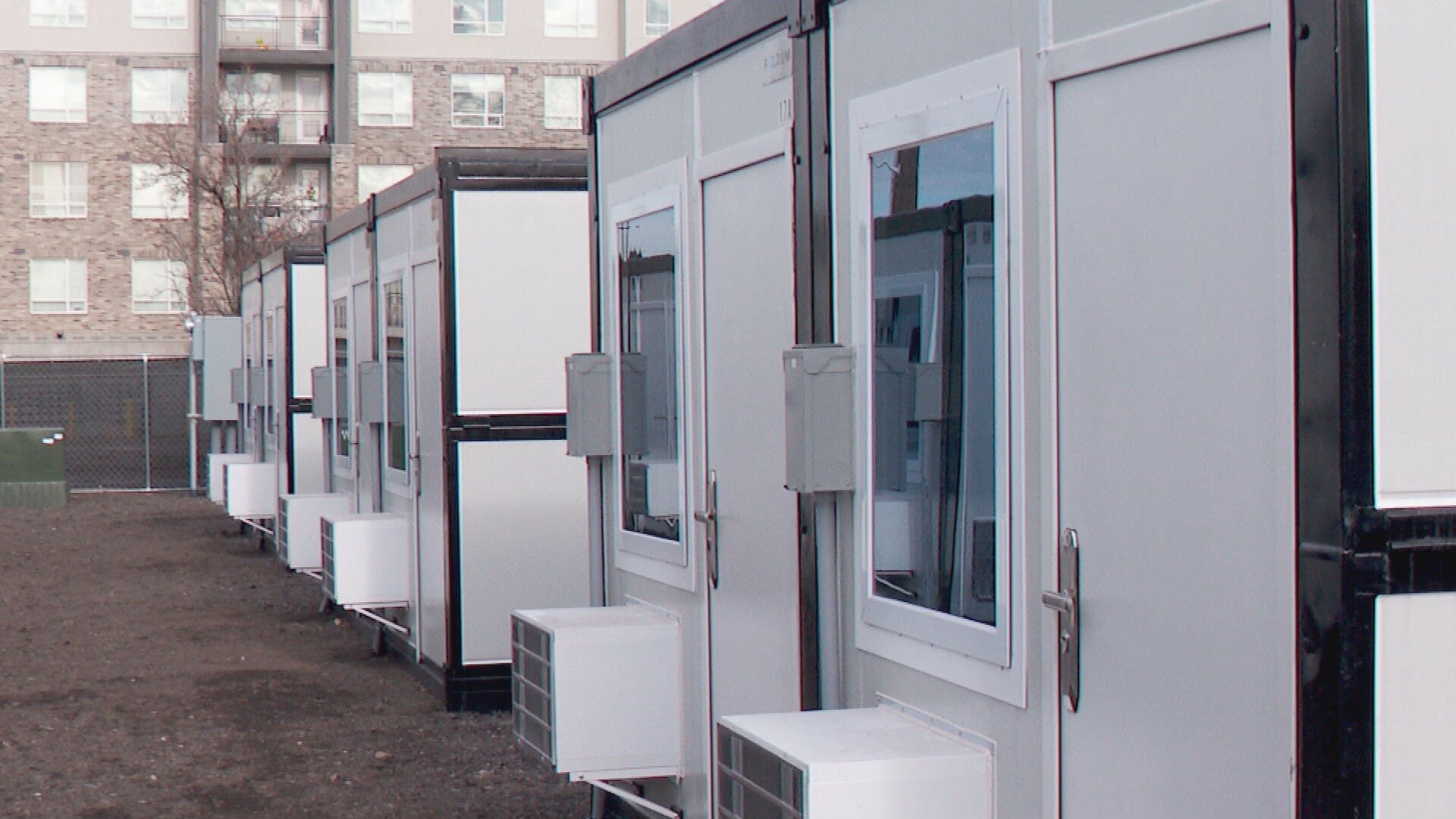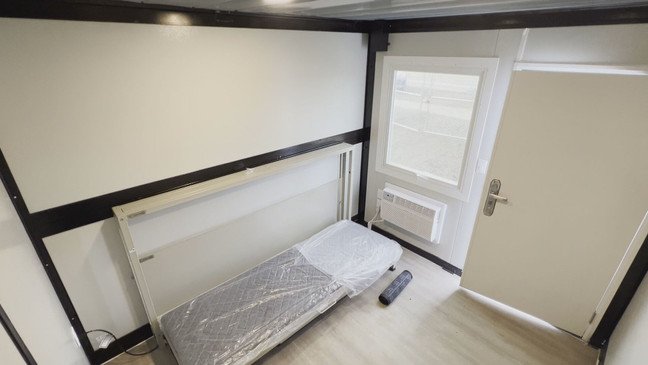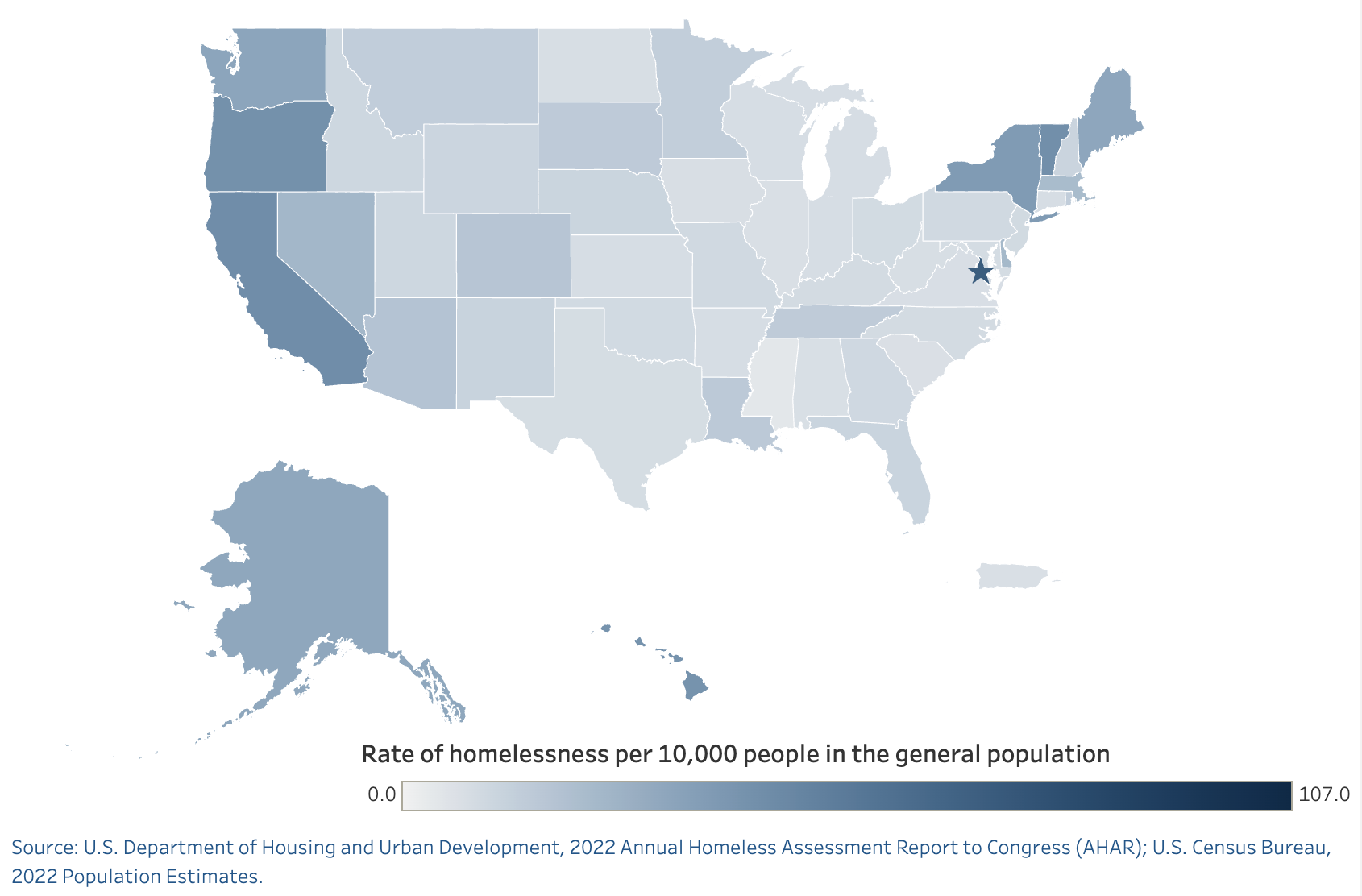An Extended Lifeline: Homeless Shelter Program Moves Forward
March 27, 2023 - Salt Lake City
Utah’s Gov. Spencer Cox signed several bills this session that are aimed at helping solve the state’s homelessness issue. One will mean a micro-shelter pilot program will stay in place for at least six more months.
Utah’s micro-shelter program aims to provide transitional housing and support services to individuals experiencing homelessness. The pilot program in Salt Lake City involves the use of temporary 'microshelters', each approximately 75 square feet in size, with a total investment of just over $600,000 in acquisition costs. These micro-shelters implement stringent security measures, including bag checks to prevent the entry of drugs, and case workers are on-site to assist residents in accessing resources for transitioning into more permanent housing.
The temporary micro-shelter community in Salt Lake City can support up to 50 people experiencing homelessness, with each micro-shelter unit fully equipped with:
Heating
Lighting
Air conditioning
Beds
Electrical outlets
A nonprofit organization has been selected by the State Office of Homeless Services to provide 24-hour support and services for the temporary community until April 30, 2024. Residents are selected through emergency shelter coordination by local homeless service partners.
The temporary microshelter community is a pilot program, with a more permanent microshelter community expected to begin operations in 2024 under state management. The goal is to provide immediate relief, stabilization, and a sense of security for unsheltered individuals, while also establishing a model for shelter services that can be replicated across the state.
Benefits and Impact
Early signs are promising. Residents are finding employment and newfound hope for a stable future. [1]
The micro-shelter program aims to provide a comprehensive solution to homelessness by addressing immediate shelter needs while simultaneously offering support services to help residents transition into permanent housing. Key benefits and impacts include:
Immediate Relief: The micro-shelters offer a safe and secure environment, providing a respite from the harsh realities of living on the streets.
Stabilization: With access to basic amenities like heating, lighting, and beds, residents can focus on their well-being and take steps towards self-sufficiency.
Support Services: On-site case workers assist residents in accessing resources for employment, healthcare, and housing assistance, empowering them to rebuild their lives.
Sense of Community: The micro-shelter community fosters a sense of belonging and mutual support, which can be crucial in overcoming the isolation and challenges faced by those experiencing homelessness.
By combining temporary shelter with targeted support services, the microshelter program aims to break the cycle of homelessness and pave the way for a more stable and fulfilling future for its residents.
Resident Experiences
The community has provided a much-needed respite for many residents who had been living on the streets. Here are some firsthand accounts of their experiences:
Sarah, 42: "This place has been a lifesaver. After years of struggling with addiction and homelessness, I finally feel like I have a chance to get back on my feet. The case workers have been amazing, helping me find resources for job training and counseling."
Michael, 29: "I was hesitant at first, but the sense of community here has been incredible. We look out for each other, and the staff makes sure we have everything we need. It's a safe haven where I can focus on my goals without worrying about where I'll sleep or if I'll be safe."
Tanya, 51: "The shelter has given me a newfound sense of dignity. Having a place to call my own, even if temporary, has been a game-changer. The staff has been instrumental in helping me navigate the system and apply for affordable housing."
It has not only provided a roof over their heads but also a supportive environment that empowers residents to take control of their lives and work towards a brighter future.
Program Extension and Funding
Utah's commitment to addressing homelessness extends beyond the microshelter pilot program. The state has allocated substantial resources to expand its efforts:
$25 million to open a new large emergency homeless shelter with 600-800 beds, the largest facility since the closure of the downtown Salt Lake City shelter in 2019. [7]
Continued funding and expansion of the 'micro shelter' program, with plans for a permanent 50-100 bed site on state-owned land. [7]
Salt Lake City is planning a tiny home village to house 400-500 people on 30-40 acres, set to open in fall 2023. [3]
The pilot program, housing 50 people, has been extended for at least 6 more months. [4]
Hope for the Future
These initiatives not only provide secure housing but also foster a sense of community, dignified living and facilitate access to social services, offering benefits beyond just shelter.





